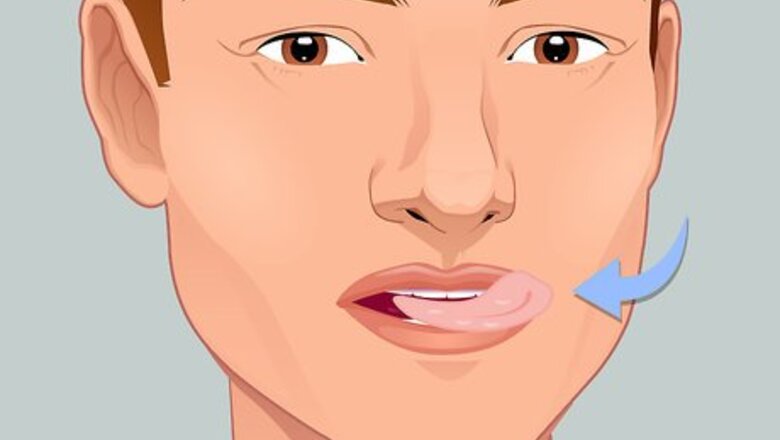
views
Whistling Loudly with Your Fingers
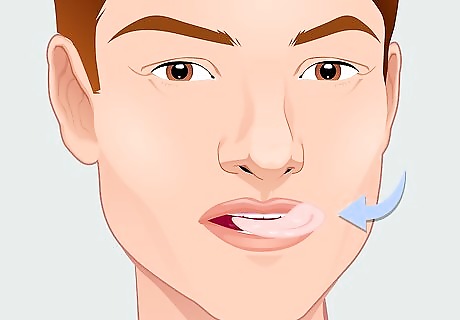
Wet your lips. Moisten the top and bottom lip by running your tongue along both sides. Apply chapstick or another moisturizer so that your lips do not crack while learning to whistle loudly. Moisture is also important to the sound of your whistle, so keep your lips wet while you practice whistling. You can also moisten your lips by drinking a glass of water.
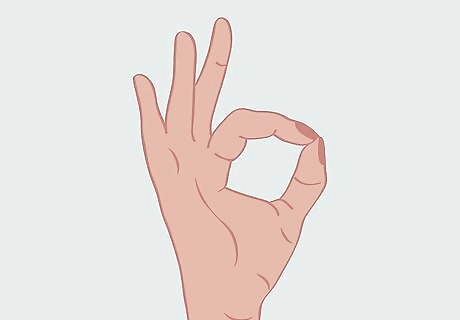
Form an "okay" symbol with your index finger and thumb. Bring your thumb and index finger together while keeping your other three fingers relaxed. Touch the tips of your thumb and index finger, forming a circular shape. It is not especially important how the remaining fingers rest as long as they do not get in the way. If you are not a fan of the “okay” finger configuration, experiment with other ways to whistle with your fingers.
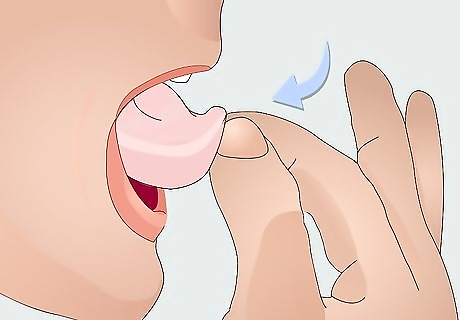
Push back your tongue with your thumb and index finger. Place the tips of your fingers on the back of your tongue and gently press your fingers to roll your tongue back. Roll the top ¼ of your tongue back on itself. Do not press too firmly, and keep the tips of your index finger and thumb together. You should apply enough pressure with your fingers to cause the tip of your tongue to curl back slightly, but without folding it completely over. Be sure to wash your hands before putting your fingers in your mouth.
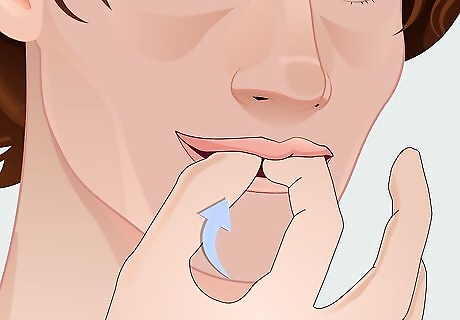
Close your lips around your fingers. Close your lips over the first knuckle of your index finger and thumb, leaving no room for air to escape through the sides of your mouth. Leave a small hole between your bottom lip and the inside of the ring created by your fingers. This will be where the air flows through, making the loud whistling sound. Make sure that all other areas around your fingers are airtight. If air escapes from any other position at the front of your mouth, you will not get a strong whistle. Wet your lips again if they dry up throughout this process.
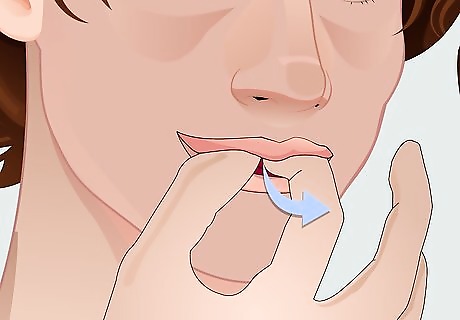
Blow air through the space between your fingers. Inhale deeply through your nose and exhale through the space created by your fingers and bottom lip. Blow a consistent stream of air through this space until you hear a whistle sound. After some practice, a loud, clear whistle should be heard through this space in your fingers. Do not be discouraged if you do not get this right on your first try. For many people, it takes time and practice to master this whistling technique. Make sure the blown air is focused and narrow so that the air flows through the correct space.
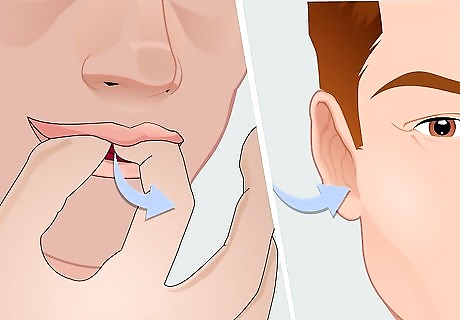
Troubleshoot common mistakes. Listen closely to the sounds you are making with your whistle and make adjustments according to what you hear. Airy, wheezing sounds mean that you are not blowing through the hole made by your fingers and that you should direct the air into the hole, or seal the your lips around your fingers. Light and quiet whistle sounds mean that you are not blowing hard enough, but that you are blowing air through the space properly. You can practice and make adjustments while walking, or while listening to music.
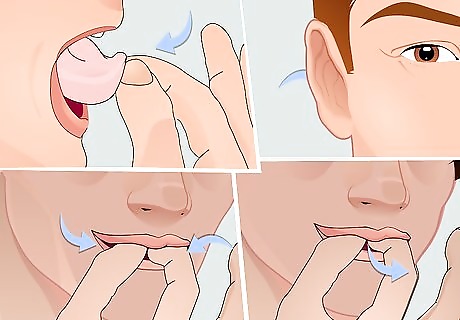
Practice the stages of whistling loudly. For the majority of novice whistlers, there are four major stages of practice involved in learning how to whistle loudly. Make adjustments during each milestone if you are having problems moving on. At the beginning you will hear air flowing through your lips without hearing an actual whistling sound. The best thing to do during this stage is to go back through the steps required to whistle loudly and make adjustments to your technique. Later you will hear a sound similar to that of a jet engine. You may hear something close to a whistle, with some vibration in your lips. From here, it's mostly a matter of readjusting your fingers until you can get a clearer sound. Soon you will hear a whistling sound, but the sound will remain soft and airy. This is due to air leaking from outside the space between your fingers. So you will need to tighten the seals made by your tongue and lips. Finally you will find a full-powered, clear whistle. If you make it to this point, you now know how to whistle!
Whistling without Fingers
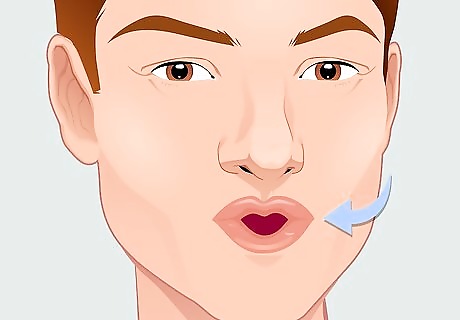
Pucker your lips in an “O” shape. Push out your lips into a kissing shape, creating a circular space between your lips. Form this shape in a way that feels natural. Wet your lips before making puckering your lips, as moisture will produce a louder whistle. This circular shape is where the air will flow through, ultimately making the whistling sound.
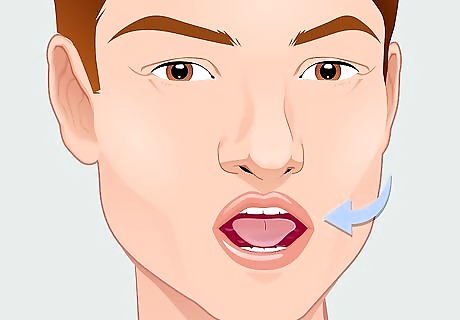
Draw back your tongue behind your teeth. Fold your tongue back so that it "floats" in your mouth just before the lower front teeth. Lightly touch your tongue behind your lower teeth, keeping your tongue relaxed and loose. Your tongue will help produce the loud whistling sound, directing air through the space between your lips. Your top molars will be touching your tongue as well.
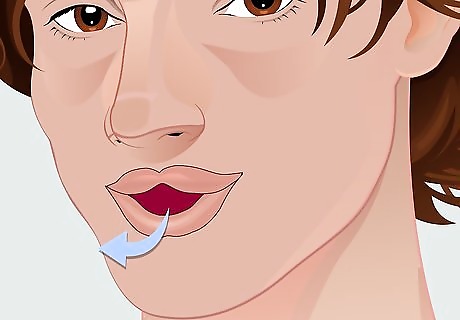
Blow air out of your mouth. Inhale deeply through your nose and exhale evenly, forcing the air through the space between your lips. Experiment with different blowing intensities and consistently levels to find the whistle sound that fits your needs. When done correctly, a clear whistle should be heard. Start with a gentle blow of air until you can hear a low whistle. This will let you know that the technique is right.
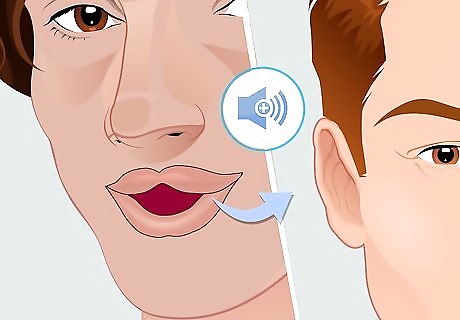
Maximize the sound of your whistle. Once you have the technique down and are able to make a whistling sound, practice whistling loudly by exhaling harder and blowing more. Learn to blow out more air while maintaining proper technique and isolating the air so that it makes a loud, sharp sound. Proper technique and blowing harder will create the loud, intense whistling sound you are looking for.











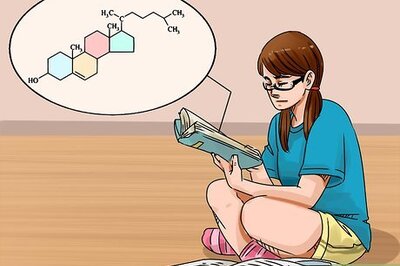
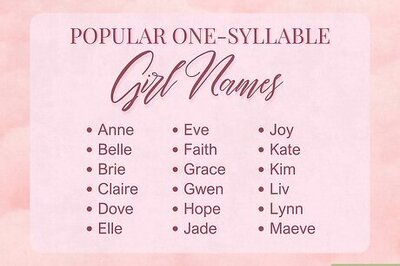




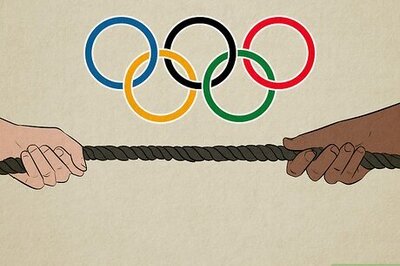
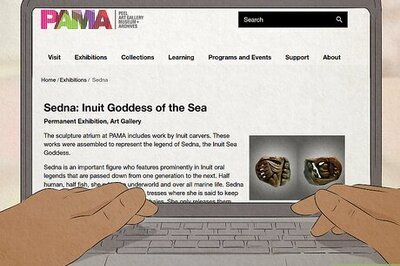

Comments
0 comment